I have bricklayers and masons in my bloodline – from both sides of the aisle. In cutting and laying the firebrick, mixing and compressing the ceramic cement I felt that connection with my Dad. He shared little snippets of working with his uncle. I can tell still after all these years he is very proud of him. Even today he’ll talk about Orville and all he learned from him.
Long before my parents were were born, my Dad’s father and my Mom’s Grandfather (Pa) built the house my mom would grow up in. Funny how life works, huh?
I imagine too there were small exchanges in the way men converse; small off-hand remarks that begin larger conversations. Likely he had that with Pa, in the beginning stages of wooing my mom, and much later when they married, bought and fixed up the old house I grew up in. Or at least I like thinking it happened that way.
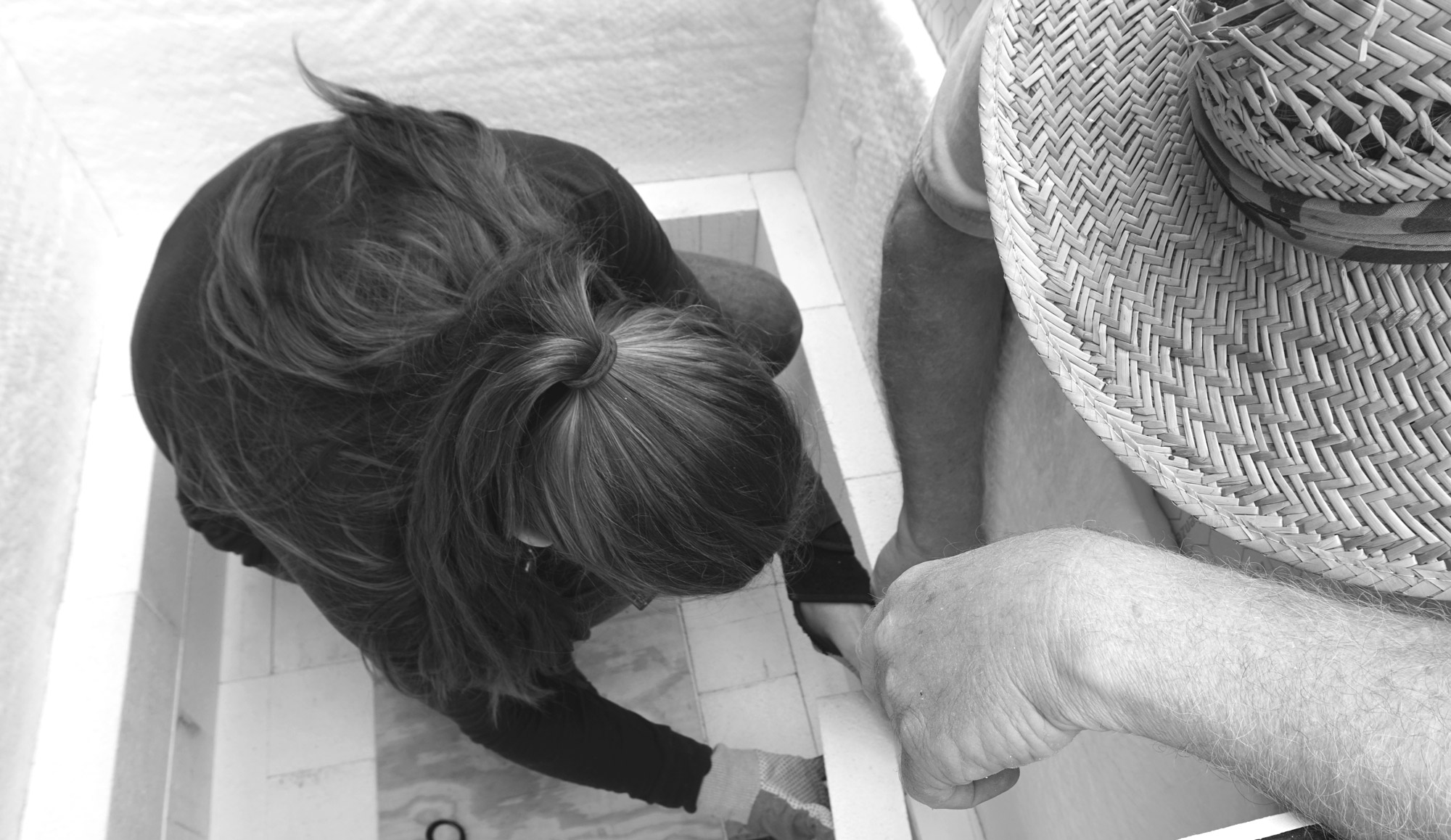
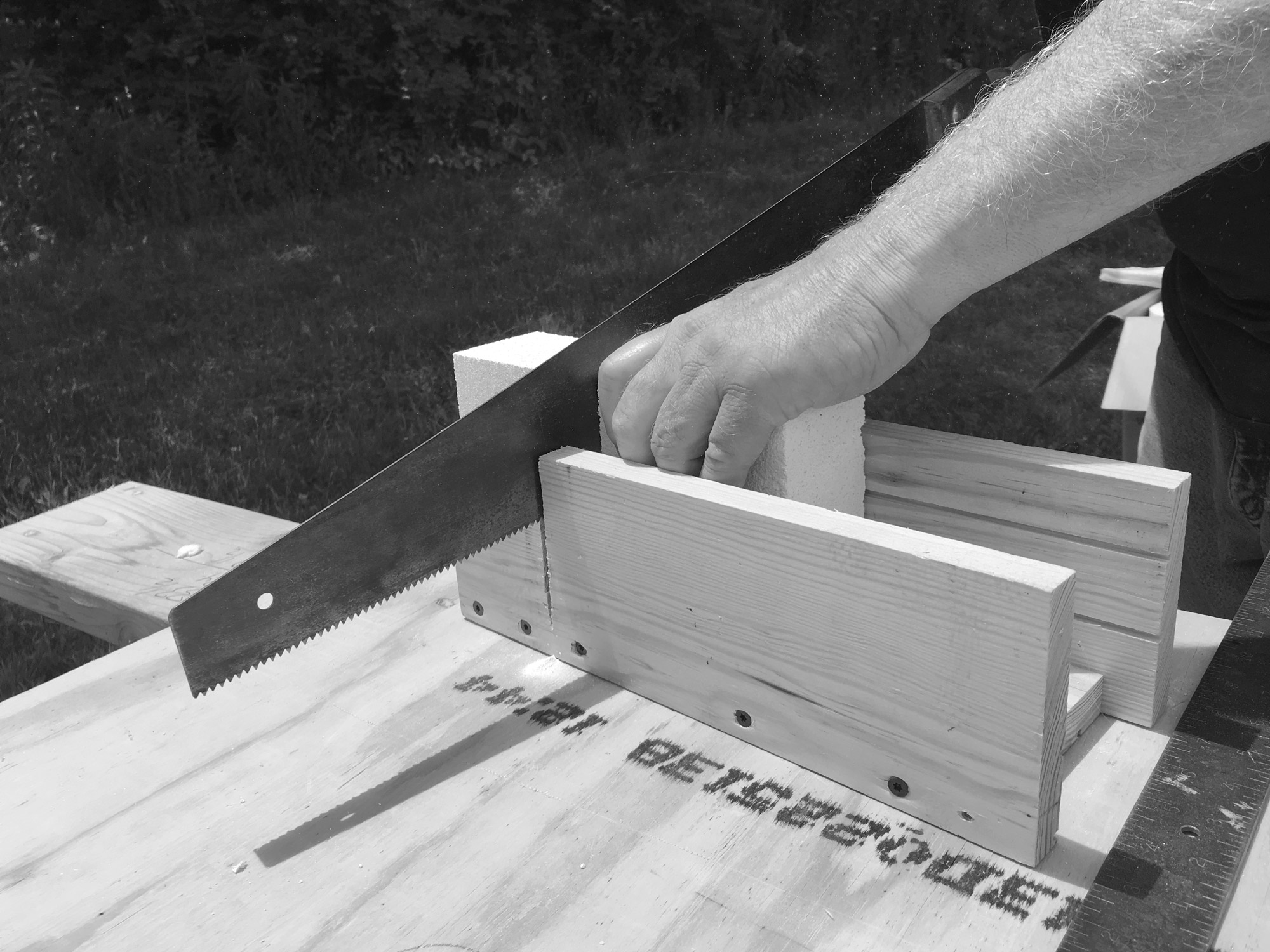
The soft bricks are about 1/3 the weight of a typical clay bricks. Its advantage is in its portability.
There are different types of brick. Even with house building there are probably quite a few. Refractory bricks are used for things like pizza ovens, fireplaces, bricks around your furnaces and for this instance, very high fire kilns. Since I really felt I’d be making primarily functional ware and with as much sustainable firing methods as possible, I opted for firebrick aimed at the range of Cone 6-8 but with the flexibility of reaching Cone 10. Soft bricks were advantage for the best insulation. And though soft brick cost more, they are easier to cut (big advantage there!) and easier to replace and patch in the system my Dad designed. Truly, this project was all in his mind with knowledge about pressure I would need an engineering degree to understand. Luckily, I have one in-house.
The soft bricks are about 1/3 the weight of a typical clay bricks. Its advantage is in its portability. Since this is a kiln that will be wheeled out of an enclosure, that weight savings is awesome for me.
The mortar is lain in the form of tape rather than a fresh, wet mixture that truly could be disassembled easily if I ever needed to do that.

This is where we often argue over form and function. Order served no function here as all sides functioned the same. “Dad, I can’t help it, I’m a designer!”
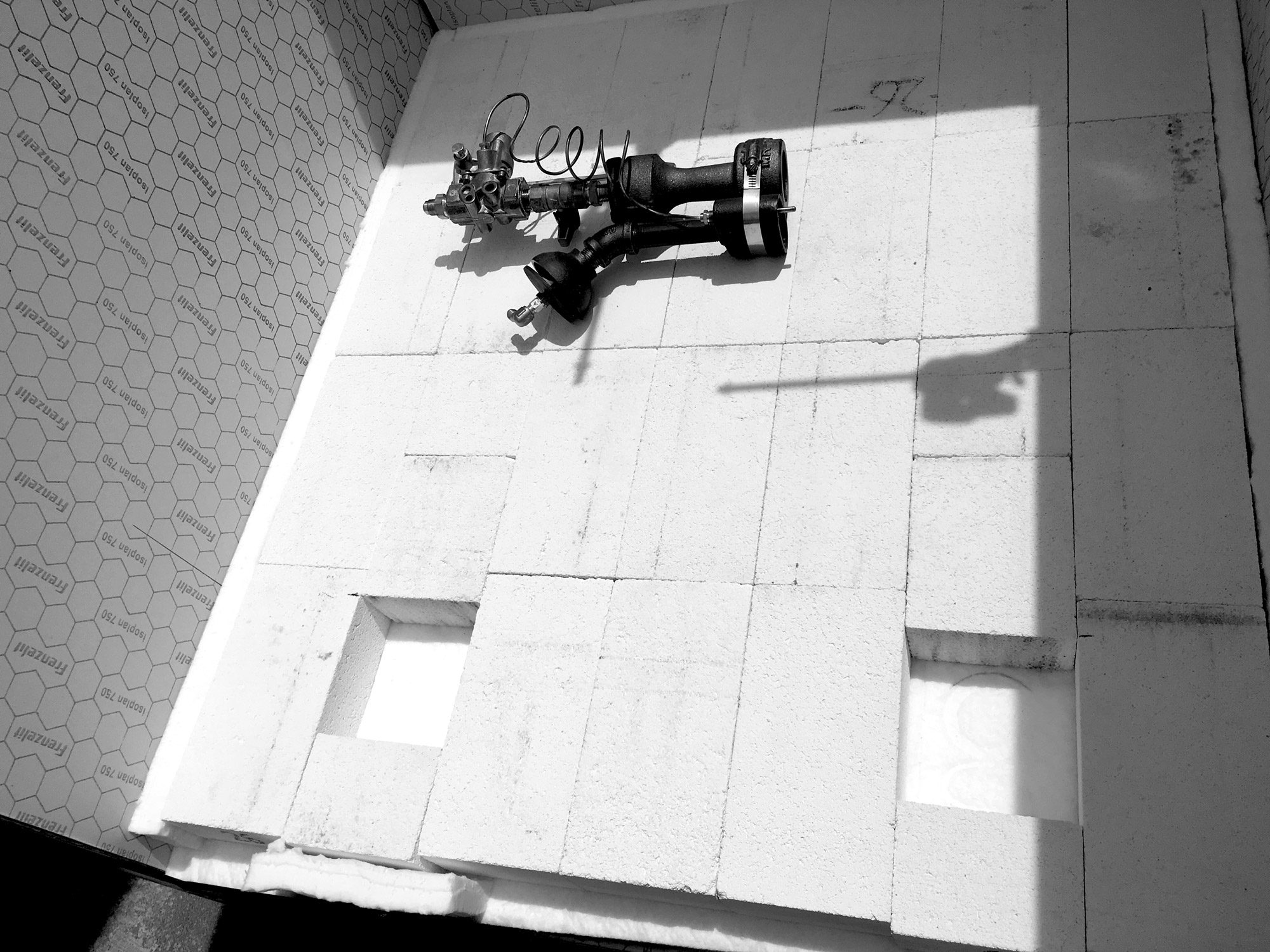
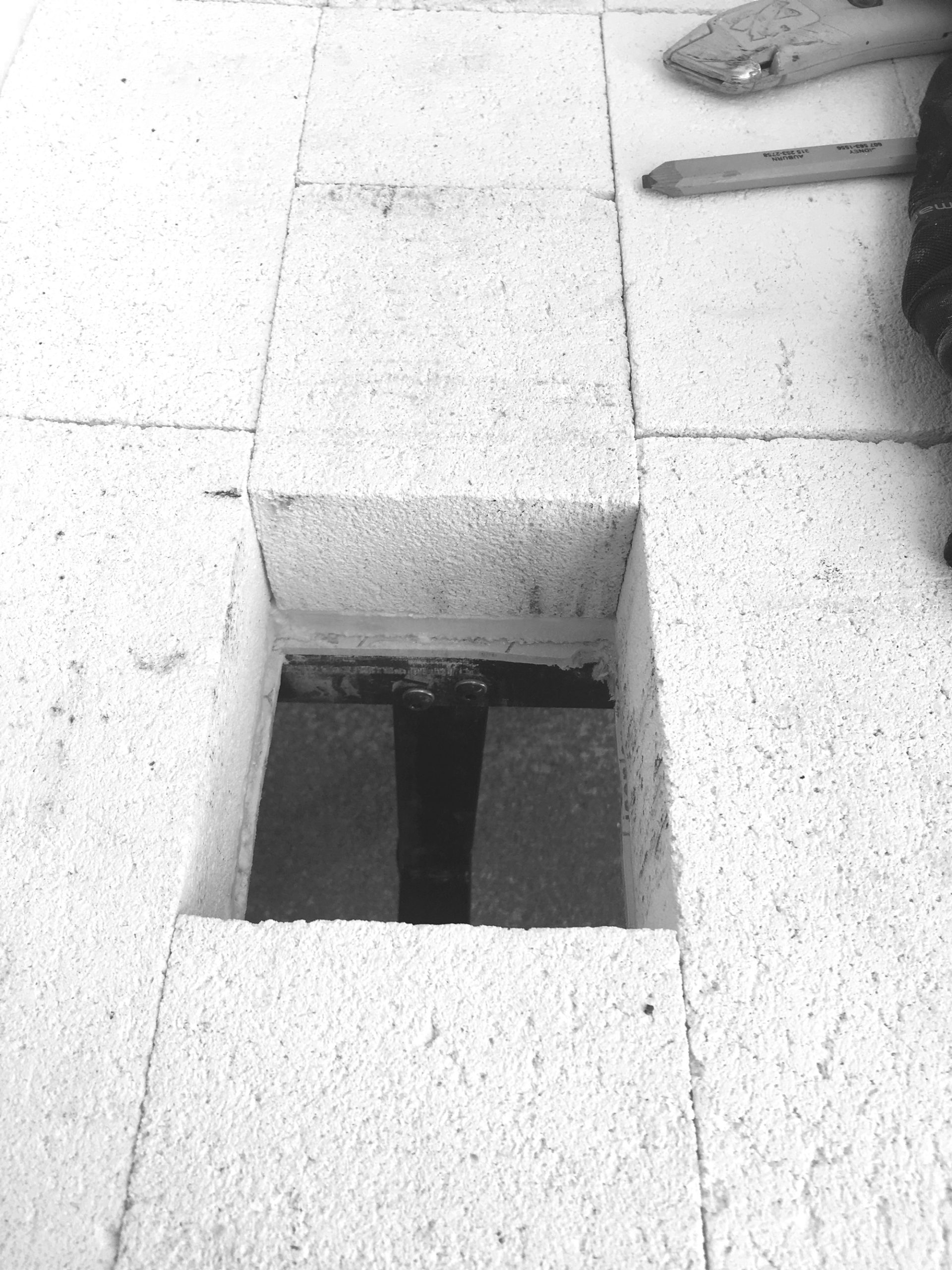
The undercarriage (welded steel frame) holds the position of the burner and the only portion cut is the fire board that was cut simply with a utility knife.
Several days later…walls go up, more blanket is layed down and I spend just under a week in the kiln, sitting on my feet and trying to wake them up.
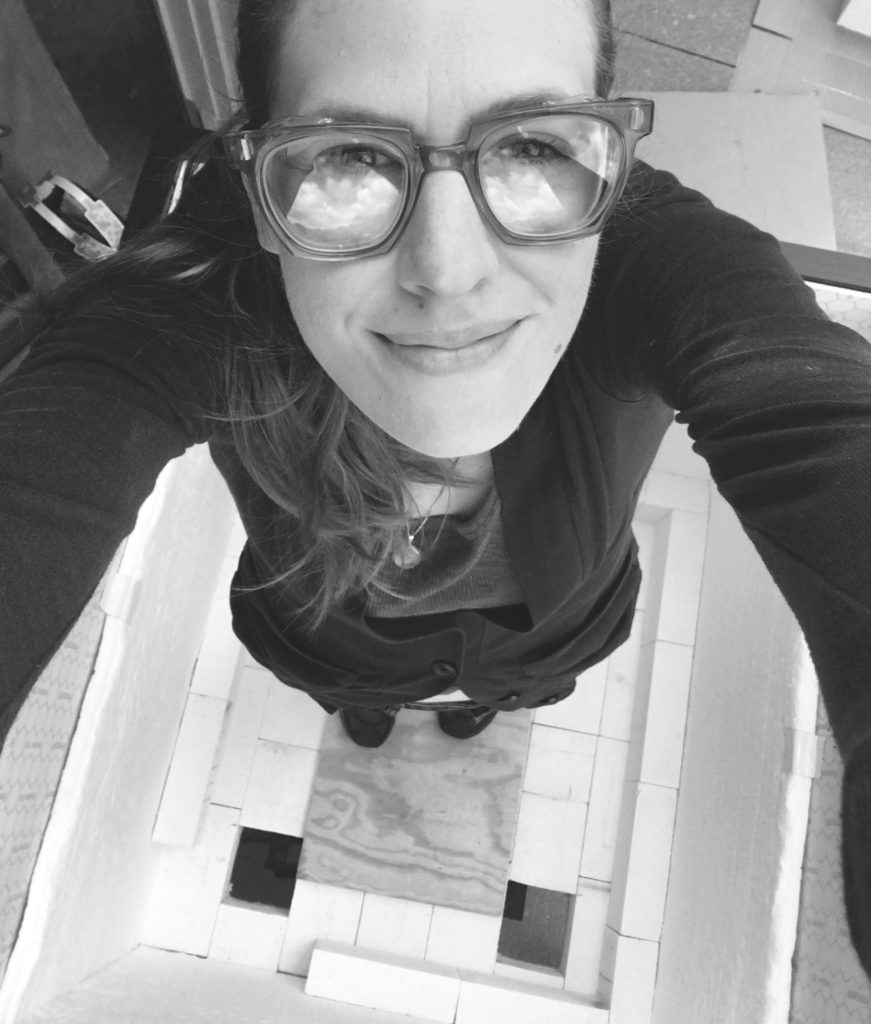
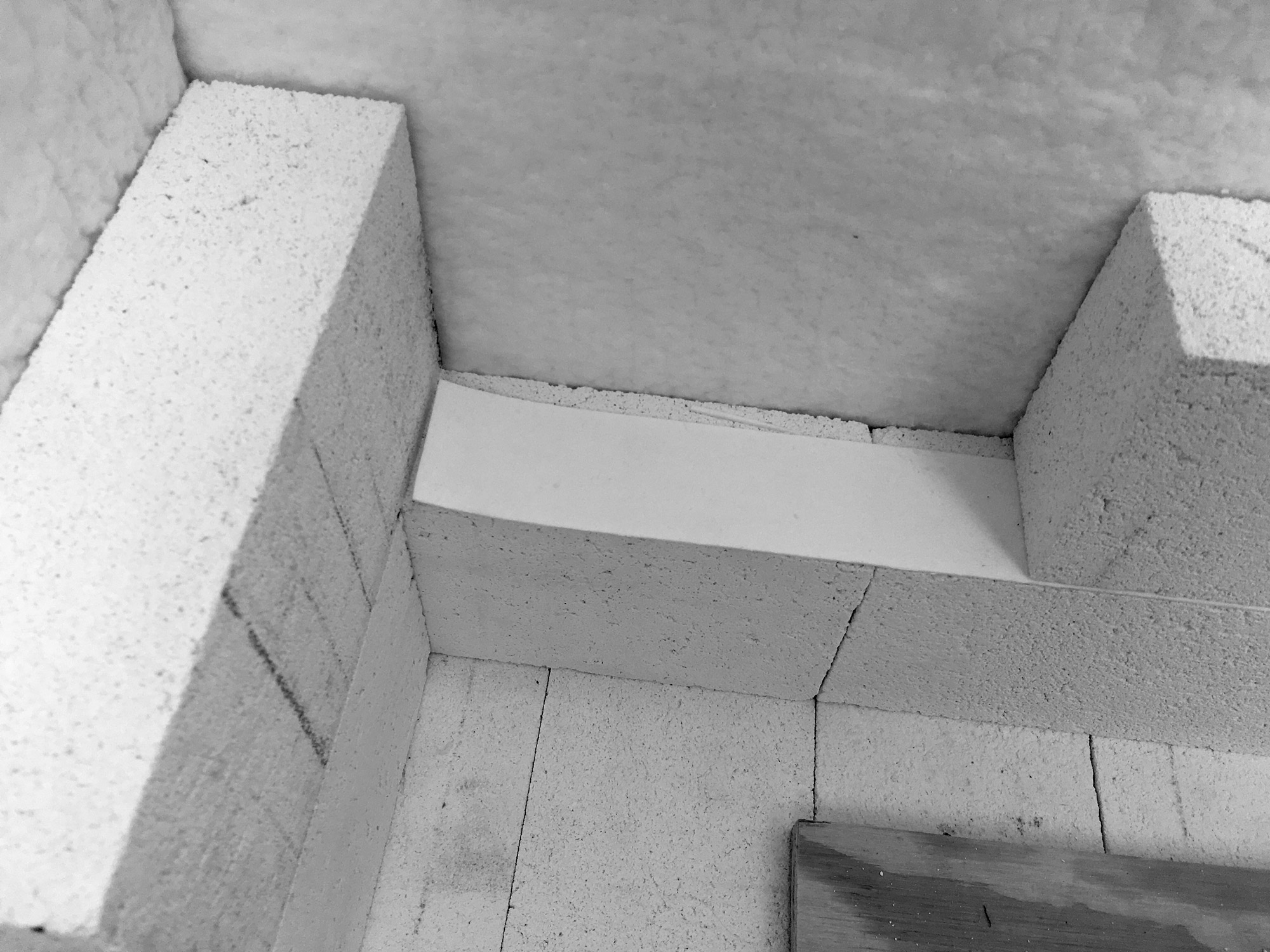
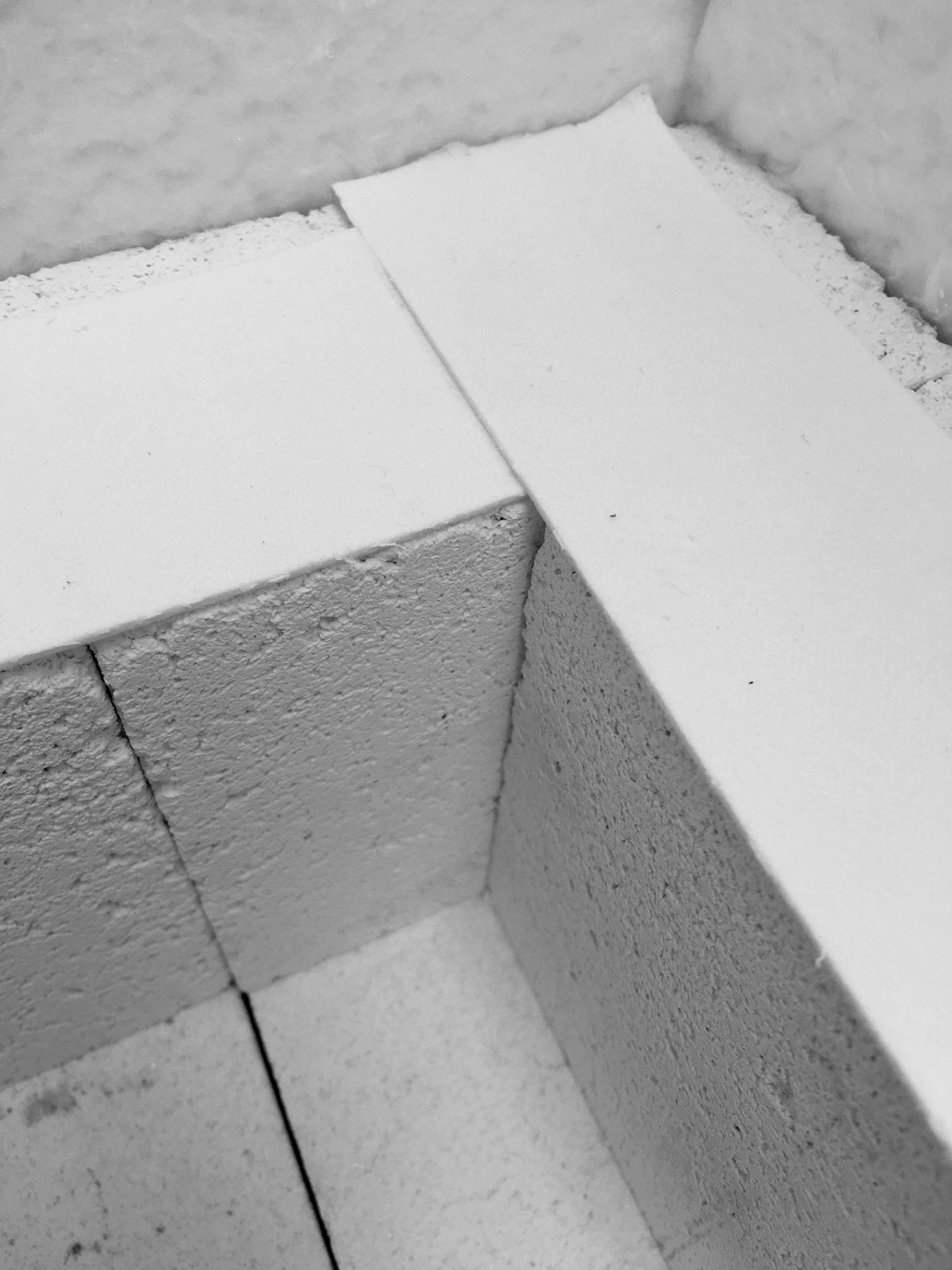
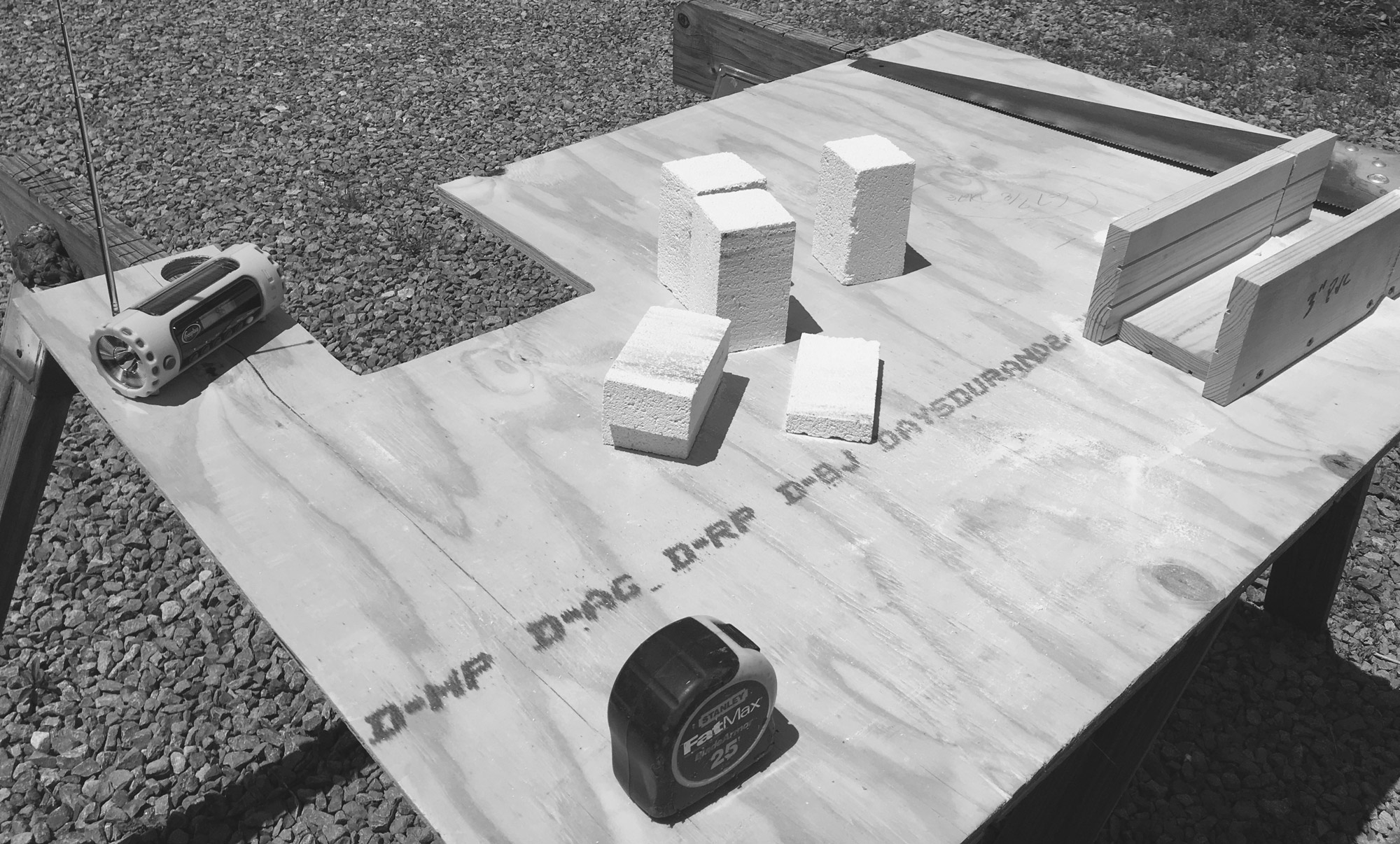
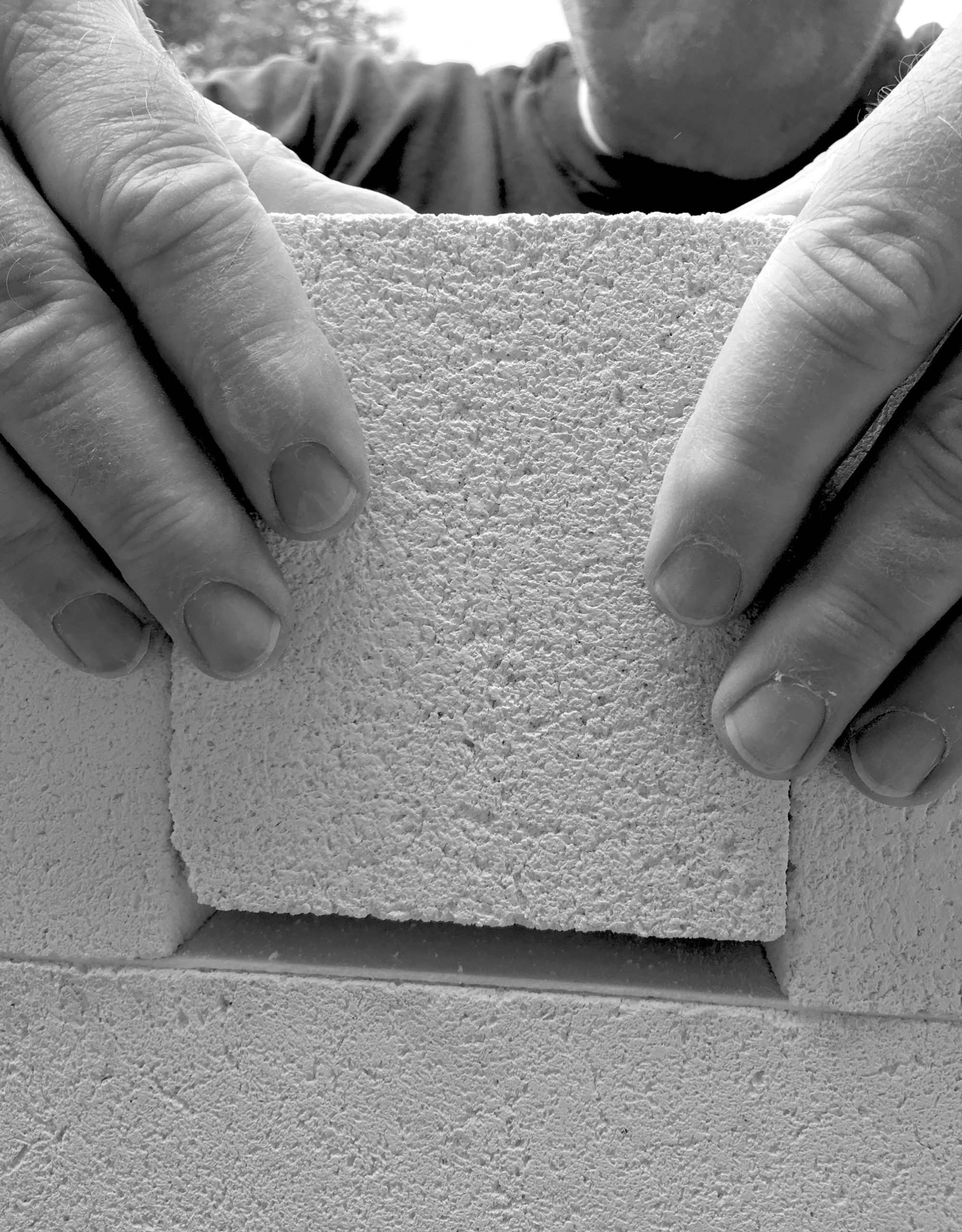



Lloyd Walker
Thank you for your account of your power kiln build. Are you open to questions?
Lloyd Walker
walkerpottery@comcast.net
Mary Ritzel
Yes, of course. If it’s beyond my engineering knowledge I will definitely reach out and see if I can get you an answer. I have not run the kiln through a full fire yet. Almost as soon as I completed the kiln I accepted a job away from where my kiln lives but I am gearing work up to fire within the next few months. It’s a very big kiln so I want to make sure I make the fire worth the materials and time for it. But yes, please ask away.